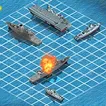
































































































War Games: An In-Depth Exploration of Tactical and Strategic Gameplay
War games have long captivated the minds of players who relish the challenge of mastering complex strategies and tactics. These games are a blend of careful planning, quick decision-making, and deep understanding of military tactics, whether set against the backdrop of historical battles or within the realms of speculative future conflicts.
At their core, war games are about the art of command. Players must manage resources, maneuver troops, and outthink their opponents. The essence of the genre lies in the intricate dance between offense and defense, as players seek to exploit terrain, anticipate enemy movements, and secure victory through superior strategy.
The appeal of war games extends beyond mere entertainment; they are a form of mental exercise that tests one’s ability to think several moves ahead. Each decision carries weight, and the ripple effects of actions can turn the tide of virtual wars. The games often mirror the complexity of real-world conflicts, requiring a blend of tactical prowess and strategic foresight.
War games also serve as a bridge between past and present, allowing players to reenact historical events or explore hypothetical scenarios. This interplay between reality and imagination is a powerful draw, offering a unique lens through which to view history and its countless ‘what ifs.‘
As the genre continues to evolve, it remains a testament to human ingenuity and our fascination with the art of war. Whether you’re a seasoned tactician or a newcomer to the world of strategic gameplay, war games offer a rich and rewarding experience that goes beyond the battlefield, into the realm of the mind where every move is a potential game-changer.
War Games Games: Core Mechanics and Strategic Depth
War games are defined by a set of core mechanics that demand strategic thinking and tactical acumen. Central to these mechanics is troop movement, a chess-like dance where positioning and terrain can mean the difference between victory and defeat. Players must consider the lay of the land, using hills, forests, and urban landscapes to their advantage while navigating the fog of war that obscures enemy actions.
Another pillar of war gaming is resource management. Commanders are tasked with allocating limited resources such as troops, equipment, and time to achieve their objectives. This often involves a delicate balance between offensive operations and the maintenance of supply lines, forcing players to make tough decisions under pressure.
Strategic planning in war games is akin to a game of high-stakes poker, with players constantly bluffing and countering moves in a bid to outwit their opponent. Long-term strategy is just as crucial as immediate tactics, requiring foresight to build defenses, train forces, and execute multi-phased operations.
These games are not just about the clash of armies; they also involve the careful construction of bases, fortifications, and infrastructure. Players must manage the growth of their empires, ensuring that the economy and military expand in tandem to support sustained campaigns.
The strategic depth of war games is further enriched by the variety of objectives and victory conditions. Whether it’s capturing key locations, annihilating enemy forces, or achieving specific historical outcomes, players must adapt their strategies to meet the goals at hand.
In essence, war games are a cerebral battleground where every decision can have far-reaching consequences. They challenge players to think like generals, blending the tactical with the strategic, and provide a playground where history, fantasy, and the art of command come to life.
War Games Online: The Social and Interactive Dimensions
War games online have transformed solitary gaming into a vibrant social experience, connecting players across continents in the digital theater of war. These virtual battlefields are not just about individual prowess but also about collaboration, communication, and community. Players form alliances, strategize together, and sometimes engage in diplomatic negotiations that mirror the complexity of real-world geopolitics.
The social aspect of online war games is a double-edged sword; it can lead to intense rivalries but also forge lasting friendships. The camaraderie developed in the heat of battle often extends beyond the game, creating networks of players who share tips, strategies, and experiences. This sense of belonging and mutual support is a cornerstone of the online war gaming community.
Accessibility is paramount in these games, with developers striving to create inclusive environments that cater to a wide range of skill levels and play styles. From the casual gamer looking for a quick skirmish to the hardcore strategist planning lengthy campaigns, online war games offer a spectrum of challenges that can accommodate everyone.
Moreover, the interactive dimensions of these games are continually expanding, with new features that allow for more direct and immersive engagement with the game world and fellow players. Chat systems, forums, and live-streaming capabilities enhance the social experience, allowing for real-time communication and shared moments of triumph or defeat.
Online war games are not just about the clash of armies; they’re about the connections formed between players. They provide a space where strategy and social interaction go hand in hand, creating dynamic and engaging experiences that continue to attract a diverse and passionate player base.
Free War Games: Accessibility and Educational Value
Free war games have democratized the genre, offering players from all walks of life the opportunity to delve into the world of strategic combat without financial barriers. These games serve not only as a form of entertainment but also as educational platforms, providing historical context and insights into military strategy and tactics. By simulating historical battles and campaigns, free war games allow players to learn about significant events and figures that have shaped the course of history.
The educational value of these games is significant, as they encourage players to engage with historical scenarios in an interactive manner, fostering a deeper understanding of the complexities of warfare and decision-making processes of leaders. The interactive nature of these games can make learning more engaging and memorable compared to traditional educational methods.
Moreover, the accessibility of free war games ensures that a broad audience can enjoy and learn from them. They are particularly beneficial in educational settings, where they can be used as supplementary tools to teach history, geography, and even economics. By presenting historical content in a game format, educators can spark interest and promote active learning among students.
In summary, free war games are not just about providing cost-free entertainment; they are a gateway to learning and understanding the multifaceted aspects of warfare and history. Their accessibility ensures that anyone with an interest in the genre can play, learn, and develop strategic thinking skills, making them a valuable resource for both gamers and educators alike.
Future Trends in War Gaming
The future of war gaming is poised on the cutting edge of technology, with emerging innovations set to redefine the landscape of strategic play. Virtual reality (VR) and augmented reality (AR) are at the forefront, promising to immerse players in hyper-realistic environments where they can experience the thrill and gravity of command as never before. These technologies will allow gamers to step directly onto the battlefield, offering a visceral connection to the action and strategic decisions in real-time.
Advanced artificial intelligence (AI) is another frontier, with the potential to revolutionize war gaming by introducing more dynamic and unpredictable opponents. AI can simulate complex behaviors and strategies, creating adversaries that learn and adapt to the player’s tactics. This could lead to a more nuanced and challenging experience, as players must continually refine their strategies against increasingly sophisticated foes.
The integration of these technologies will not only enhance the realism and immersion of war games but also open up new possibilities for gameplay. We can anticipate scenarios where players command units through voice commands or gestures, or where strategic planning unfolds within a fully interactive 3D war room. The line between game and reality will blur, as players are drawn deeper into the strategic nuances of warfare.
As war gaming evolves, it will continue to push the boundaries of what is possible, both in terms of gameplay and the educational insights it provides. The future promises a more connected and immersive experience, where players can not only witness history but actively shape it within these ever-evolving digital landscapes.